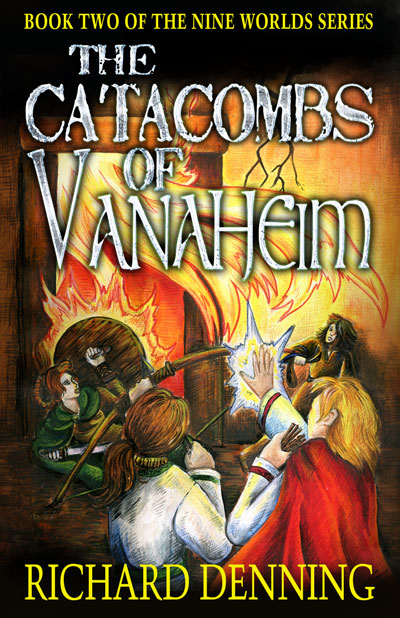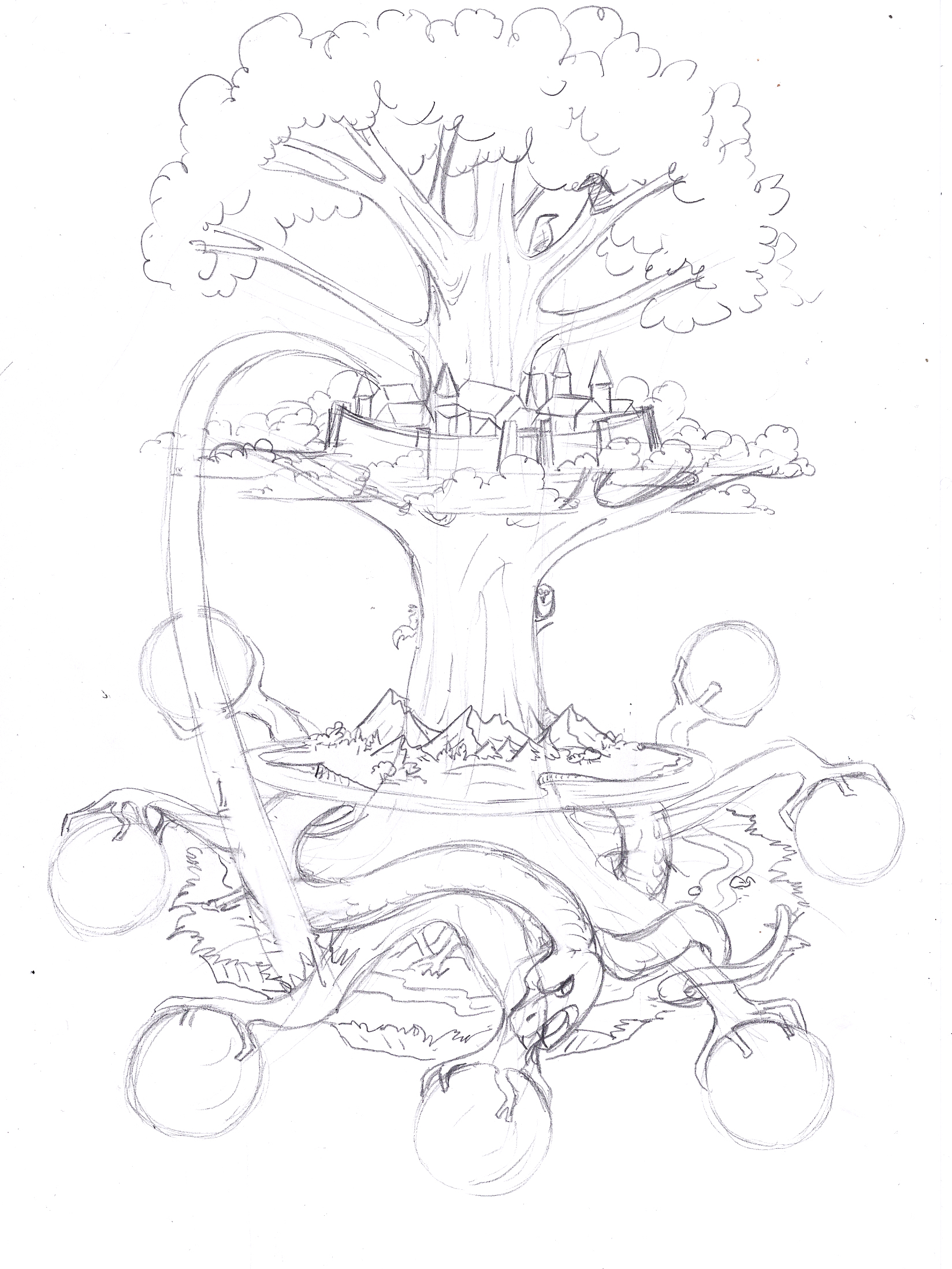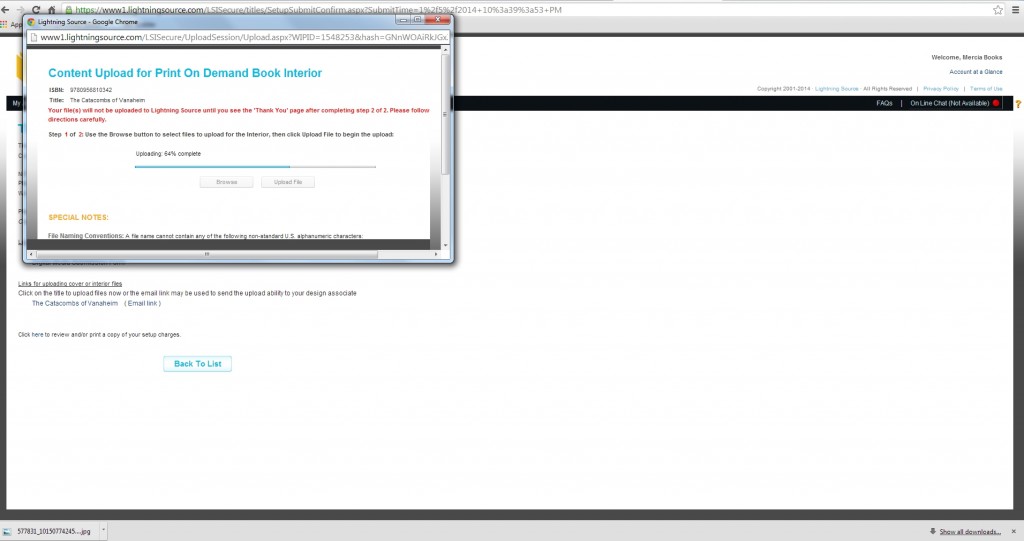On Wednesday 8th January I signed off the proof of my latest book ‘The Catacombs of Vanaheim.’ All books have their own story and route to publication and every author will have their own approach. I thought it might be of interest to talk about how The Catacombs of Vanaheim got into print. Catacombs is actually the second in the Nine Worlds Series. The Nine Worlds series is a Historical Fantasy Adventure For Children of Ages 9+ in which the historical world of Anglo-Saxon England meets the mysterious world of myths and legends, gods and monsters our ancestors believed in. This is the world as it might have been had those stories been true…
I dreamed up the idea for the series in late 2011 and wrote the first novel Shield Maiden over the winter. It was published in Spring 2012. It received some good reviews and won a prize in the USA. In 2013 I started writing a sequel.
- Starting with a snow flake. I tend to use an approach to plotting a novel called the snow flake technique. You start with the basic concept of the novel – the essential question that needs to be answered. Then you expand this to a simple outline of the essence of the book -usually a paragraph that discusses the main character, what he/she wants and what prevents them from getting it. That paragraph can even become the back page blurb as it did in Catacombs:
The Bifrost – the passageway between the Nine Worlds – is open and now Anna’s village is under attack by creatures and horrors the villagers are not prepared to deal with. So now Anna and her companions must travel to Vanaheim, home to the Vanir: gods of wisdom and magic. There the young sorcerer, Wilburh, hopes to obtain a way to protect their village. It is not as easy as all that for Wilburh’s magic is failing him and they find that the gods themselves are prisoners. To free them the children must enter the deadly Catacombs. In there they will need all their courage and skills just to survive.
- Expanding the Outline. From that paragraph I now expand the plot in stages, writing a 3 or 4 paragraph summary in which each paragraph is an ‘act’ in the Novel usually ending in some disaster or problem that only worsens their predicament. From that outline I try and pull out a sentence that will become each chapter and finally we have a plot chapter by chapter.
- Its all about Characters. Books need characters. They should not just be about plot. Its not just about what happens but to whom stuff happens. In particular we need to get a idea and write notes on how characters change especially the main character. Each book should ideally involve a character altering or changing in some way. Characters need aims and motives – what do they want and why. They should have some weakness ideally or at least an obstacle preventing them getting what they want.
- Writing the book. Finally after some months of plotting I begin writing the book. Now I work full time, run a large hobby convention annually and have 2 kids. So getting words on the page can be hard at times. There is no clever solution beyond this simple advice: Each day sit down and write a paragraph. Just a paragraph. If you cant manage more than that just do that. Often a paragraph becomes two or three, a page or a chapter but even if it does not you have 30 more words on your page.
“The first draft of anything is shit.” Ernest Hemingway
- Drafts. Hemingway had a point. The first draft will be rubbish. To me though the hardest thing is getting 30,000 to 50,000 words down. Once you have done that, once you have a book of sorts then the next phase is what creates the novel from that mass of words. The first draft is for me alone. No one else sees that. I now spend a good few weeks redrafting it twice through. In this process I am looking for the overall continuity. I am looking for major holes and story threads that go no where that need tidying up. I am checking if a characters story is developed. I then pass the draft to my first readers – family members. What I want from them is not editing (although if they spot spelling and grammar errors I welcome that) – what I want is an opinion on does the story make sense? Does it go anywhere? Again are there holes and problems? I then redraft again and again. By now we are around 9 months into the writing of Catacombs.
- Sharpen your pencil Gill. At this stage – or actually even earlier when I had an early draft, I asked Gill Pearce of Helion’s Art to start coming up with the images. I identified around 20 scenes I wanted ink drawings of, a map and a front cover. Gill starts getting busy with ideas. Gill has had her share of illness this year so she performed wonders completing the images.
- Editing Once I have the draft at a satisfactory point I send it to my editor Jo Field . Jo and I fling versions of the chapters back and forth, arguing about turns of phrase and so forth. Of course spelling is corrected and grammar errors fixed but editing is much more than that. Jo spots continuity errors, makes suggestions for alternatives in certain scenes and generally improves the book. the editing often takes a couple of months or more.
- Book cover. Around the time I send the book for editing I usually engage the services of Cathy Helms of Avalon Graphics. Its Cathy that creates the book cover. In the case of Catacombs that mean taking an image Gill had drawn and painted and using that to make the book cover. We encountered a slight problem here. I had given the go ahead for Gill to paint the cover before Cathy had fed back that she needed a wider image. Poor gill had to stick card to the image and paint a wider area which she did brilliantly. I learned a lesson there to check with the book cover graphics designer that the artwork fits!
- Lay it all out man! When all is ready I start laying out the book in Indesign (not word which is poor at layout for books). Much time is spent ensuring the look of the book is correct margin sizes, style of chapter headings etc. Then I drop the text in and in the magical way that Indeisgn works the text flows through the book. I drop in the images and tidy it all up and export to pdf.
- Signing of on the proof. Once the text of the book and the separate cover pdf (from Cathy) is uploaded I wait anxiously for the message that the files are approved. I then get to see a digital proof of the book. Hopefully there are few or no amendments needed and bingo the book is made ready to print! It will take 2 or 3 weeks to show up on Amazon etc as on sale but the same day I order a box load of books and send Cathy, Jo and Gil their own copies.
- E-books. Of course it does not end there. The book needs e book conversion to not only 1 but three main distributors – Amazon Kindle, Smashwords for Apple, Kobo, Barnes and Noble, Sony etc and finally Google E-books.
The whole process took around a year for the 40,000 word novel.
I hope that insight is of interest. Now to get on and write another novel!





Related Articles
2 users responded in this post
Congratulations on your new book, Richard – and I love the idea of the snowflake technique!
Thanks Debbie. The snow lake idea is that you start simple and make it ore complex. A snow flake is eh same pattern over and over. But it not my idea – I read it off another writer’s site.